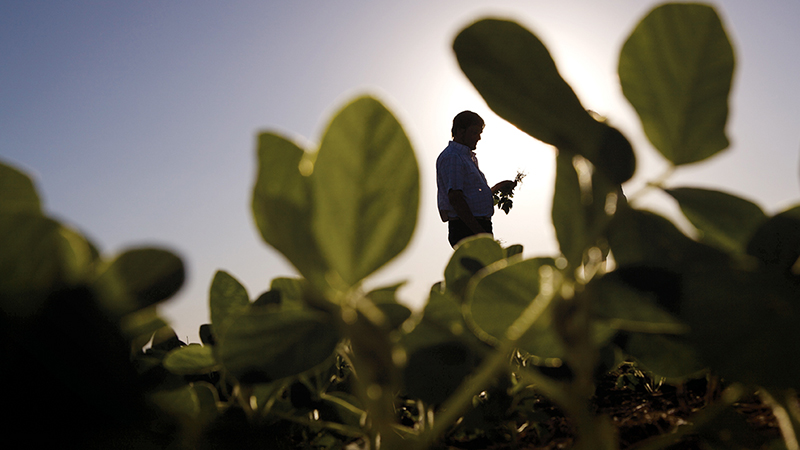Waterhemp, Nitrogen Loss Biggest Challenges To Corn Crops
Jill Scheidt, agronomy specialist with University of Missouri Extension in Barton County, scouted area fields to prepare this week’s field scouting report.
Scheidt says wheat is in the soft dough stage and diseases are present, but it is too late to spray for them.
“It usually takes four weeks after flowering for wheat to be ready to harvest. On average, wheat is running 14 days behind,” said Scheidt.
Scheidt did report seeing a lot of waterhemp in corn fields this week. It is important to kill water hemp at a very early stage, when it is 2 inches tall or less, to ensure good control. Many waterhemp plants are Roundup resistant and hard to control because they grow 1/2 to 1 inch per day.
“If waterhemp is identified in your field, it needs to be sprayed immediately. You can identify waterhemp from other pigweeds by the hairless leaves,” said Scheidt.
Dicamba products work well in corn; Cobra works well in soybeans. If water hemp is not resistant to Roundup, use a minimum of 32 oz. / ac. Roundup WeatherMax or PowerMax. Search for IPM 1030 for more information on controlling water hemp.
Corn is leaning due to wind and excess rain in the soil, but should stand back up.
“The excess rain received in southwest Missouri has reduced the amount of nitrogen available to the corn crop,” said Scheidt.
According to Peter Scharf, MU fertility specialist, producers are likely to need to apply more nitrogen if corn that is at least 1 foot tall remains a lighter green than it should be once the soil is no longer waterlogged. You can also track rainfall and probable nitrogen loss by going to Nitrogen Watch.
“According to the maps, producers in Barton and surrounding counties should be aware of potential nitrogen loss in poorly drained soils and those in well to moderately drained soils have probably experienced substantial nitrogen loss if nitrogen was applied pre-plant,” said Scheidt.






